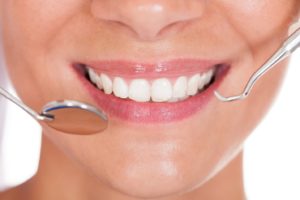Should I Be Worried About a Gum Graft?
October 4, 2022

Your smile is one of the first things that people notice about you—but your smile is composed of more than your pearly whites; your gums are also just as important as your teeth! That means if you’re suffering from periodontal disease, it’s in your best interest to seek treatment from your dentist. Depending on the severity of your situation, your dentist might suggest a dental gum graft as a means of addressing the issue—but if you’re concerned about pain, you don’t need to be! Here’s more about this form of gum disease therapy and a few tips for ensuring a smooth recovery process so that your smile is able to quickly get back to looking its best.
What Is a Dental Gum Graft?
To put it simply, a dental gum graft is a minor surgical procedure that’s used to restore gum tissue that’s been destroyed or compromised, often by the likes of periodontitis (advanced gum disease). Untreated gum disease can irreversibly destroy your gum tissue and even lead to tooth loss, due to the roots of the teeth eventually becoming exposed. This exposure can also result from bad oral habits like overbrushing or using a hard-bristled toothbrush; but infection is the most common cause.
That said, a dental gum graft is often the best way to restore this compromised tissue and in turn, protect your tooth roots. Your dentist will borrow gum tissue, often from somewhere else in your mouth, and graft it onto the treatment area. It’s a relatively straightforward process that sets your gums up for better health moving forward.
And luckily, the first thing your dentist will do is numb your mouth with an anesthetic, so you don’t have to be concerned about pain! You might experience some discomfort following a gum graft, depending on if any tissue was removed from your palate. In any case, your dentist will provide you with aftercare instructions for addressing any swelling or minor pain.
How Can I Ensure a Smooth Recovery After a Gum Graft?
Even though gum grafts aren’t inherently painful, you can experience some pretty painful consequences if you don’t let your mouth heal properly! That said, you should prioritize your aftercare and follow any specific guidelines provided by your dentist. You can also consider the following tips:
- To reduce any bleeding, gently place gauze on the surgical site (not directly on top, but instead to either side of the site).
- Avoid strenuous physical activities for the following 3 – 7 days, as increased blood flow can interfere with the healing process.
- Do not pull out your lip to try to see the wound, and refrain from using your tongue to touch it.
- Do not brush or use mouthwash for the first 24 hours. For the next month, you’ll have to be very careful when brushing near the surgical site.
- Avoid hot drinks and foods for 2 – 3 days following the procedure and stick to a soft-foods diet for the first week, slowly reintroducing harder foods.
If your dentist thinks a gum graft is necessary, pain is the very last thing you have to worry about! Assuming you’re diligent throughout the aftercare process, your smile will be back in tiptop shape in no time at all.
About the Author
Dr. Franco Cordini has been improving the smiles and lives of patients and families in the Louisville area for several years. Dr. Cordini received his dental doctorate from the Creighton University School of Dentistry and has taken countless hours of continuing education in a wide variety of fields. If you have any questions about dental gum grafting or would like to arrange a visit, you can contact Dr. Cordini through his practice’s website or over the phone: (502) 425-5010.
No Comments
No comments yet.
RSS feed for comments on this post.
Sorry, the comment form is closed at this time.


